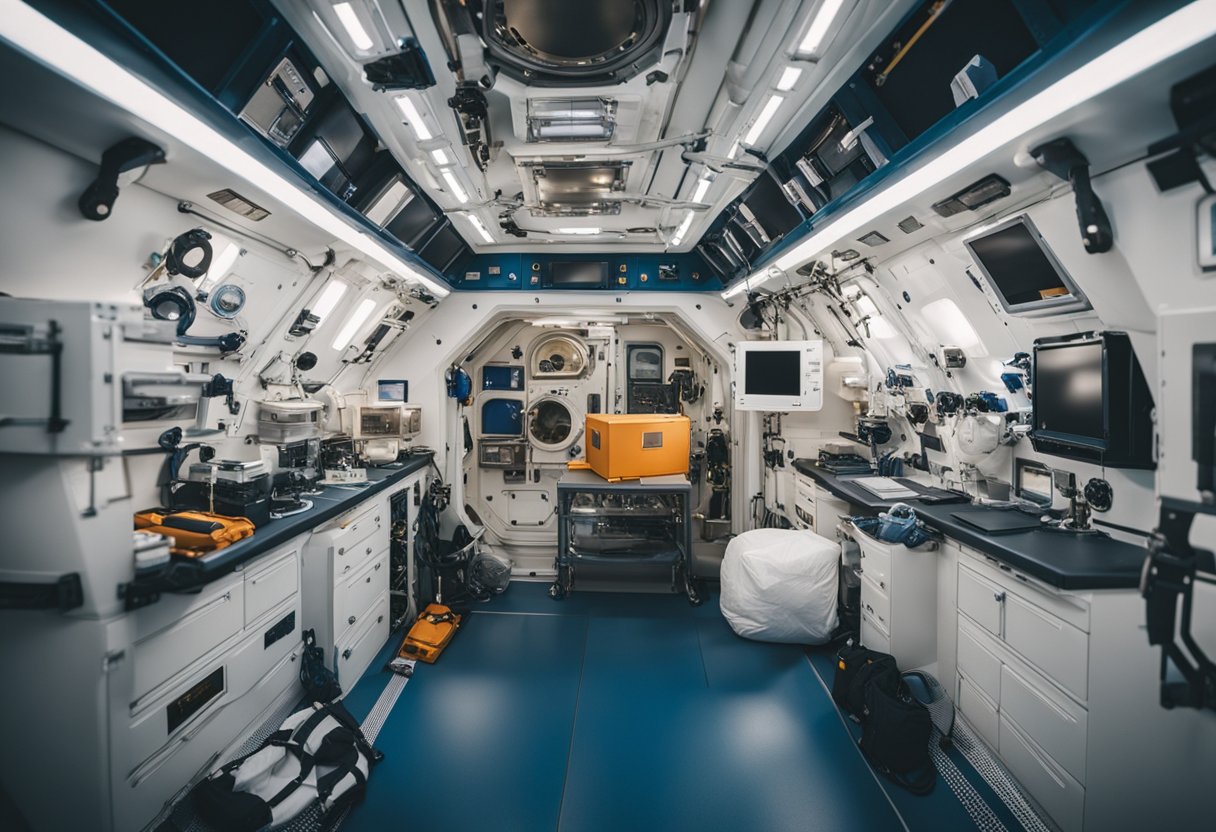
Life aboard a spacecraft presents a unique set of challenges and experiences that are quite unlike living on Earth. Adapting to these conditions is a critical aspect of any space mission. Astronauts undergo rigorous training and preparation to equip themselves for the physical and psychological demands of spaceflight. The design of the spaceships, including the International Space Station (ISS), reflects a deep understanding of human needs in a microgravity environment to make the adaptation process more seamless.
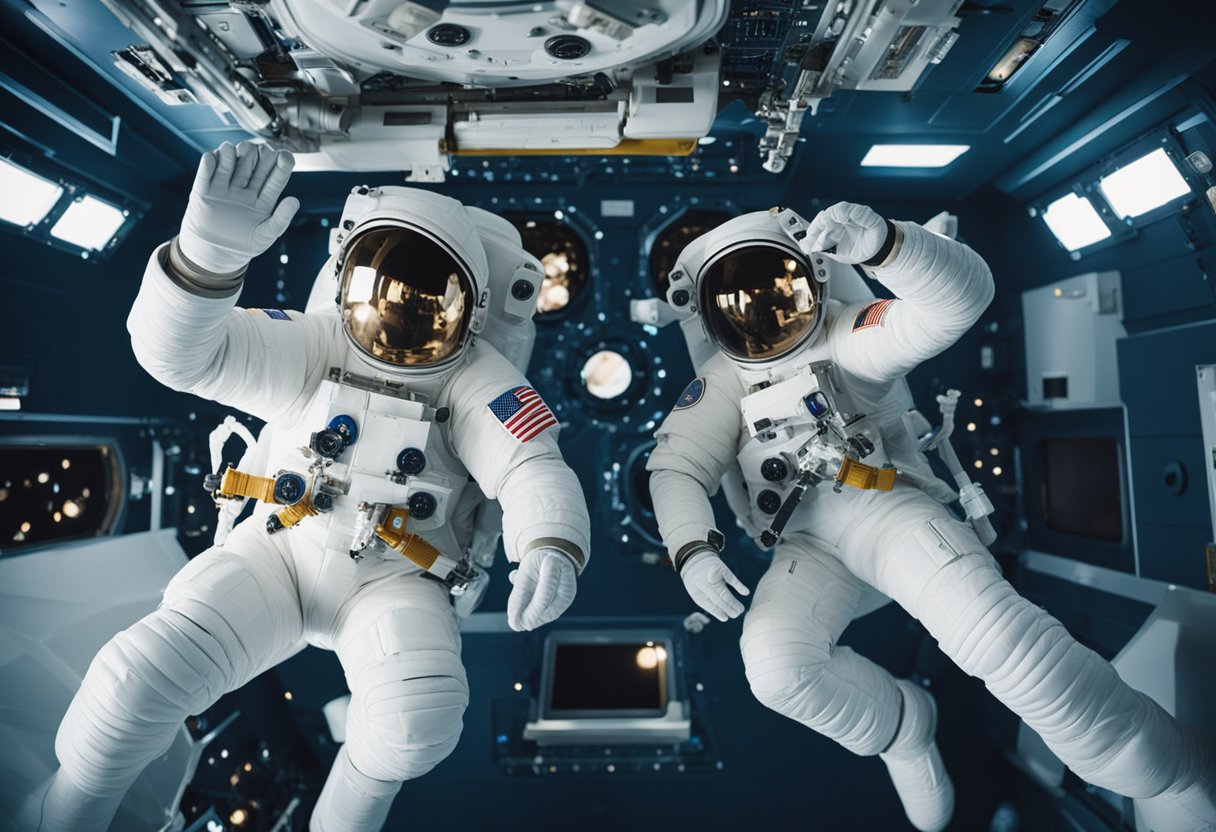
In space, maintaining physical health is paramount, as microgravity can lead to muscle atrophy and bone density loss. Consequently, spacecraft are equipped with specialised exercise equipment, and astronauts are required to follow a strict exercise regimen. Psychological adaptation is equally vital, with astronauts needing to manage isolation, separation from family, and the pressures of living and working in confined spaces. For these reasons, support from mission control and the careful selection of compatible crew members are essential to the success of the mission. Upon returning to Earth, astronauts must readapt to Earth’s gravity, highlighting the body’s remarkable ability to adjust to different environments.
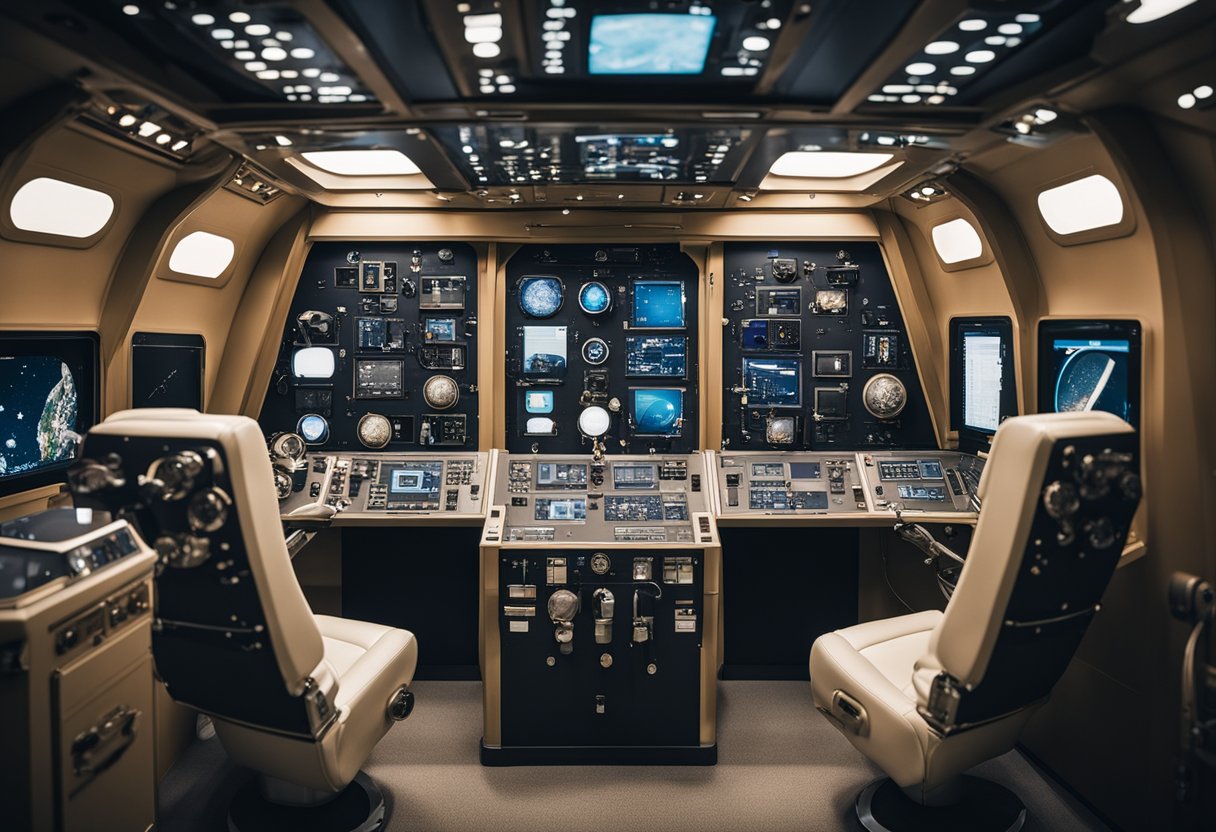
As we explore the adaptation to life aboard spacecraft, it is essential to understand the significant milestones that have paved the way in space exploration. From the pioneering Apollo Missions to the innovative development of the Space Shuttle, each step has contributed to our current capabilities in spaceflight.
The Apollo Missions mark a seminal chapter in our venture into space, with the renowned Apollo 11 mission of 1969 achieving the first manned moon landing. Spearheaded by NASA, these missions were primarily conducted from the Kennedy Space Center, arguably the most iconic launch site for American spaceflight. The role of the Apollo Missions in advancing our understanding and technology cannot be overstated, as these missions laid the foundation for prolonged human presence in space and provided us with invaluable lessons on living beyond Earth.
In the decades following the Apollo era, we witnessed the birth of the Space Shuttle programme, a leap forward in reusable spacecraft innovation. The shuttles facilitated numerous scientific breakthroughs and satellite deployments, all centred around the Kennedy Space Center and managed by mission control in Houston. The program also represented a pivotal shift towards more sustainable forms of spaceflight, influencing future entities such as SpaceX, which would later pick up the baton to develop advanced and reusable rocket systems for the next generation of space exploration.
The historical context of space exploration showcases our unwavering commitment to pushing the boundaries of what’s possible. Through the combined efforts at Kennedy Space Center, Houston, and contributions from private entities like SpaceX, we have laid the groundwork for future endeavours such as those projected by SpaceVoyageVentures.com, which paints a picture of an exciting era of space tourism just around the corner.
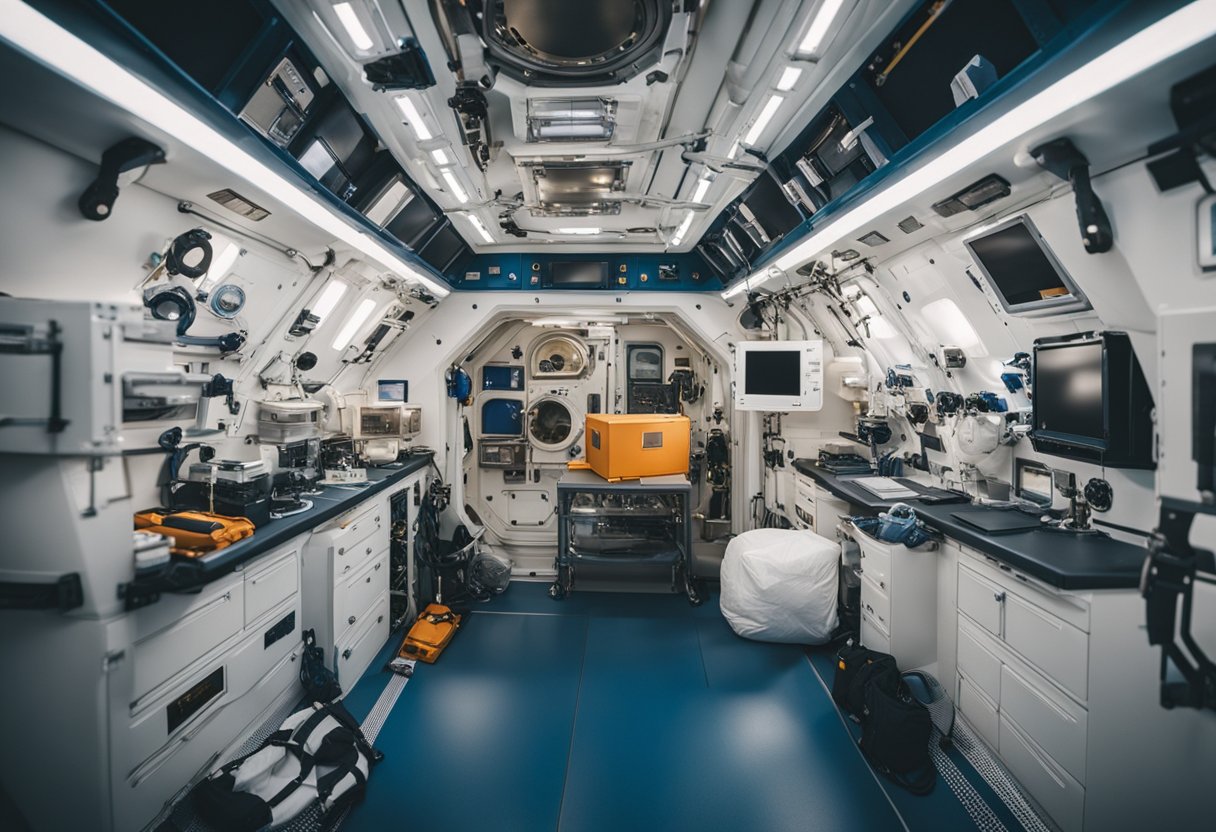
Before we embark on the celestial journey, it’s vital to understand that astronaut training and launch procedures are fundamental elements in the preparation for spaceflight. These meticulous preparations ensure the safety and success of missions to the frontier of space.
At NASA’s Johnson Space Center, we subject our astronauts to rigorous training programmes. These are designed to equip them with the necessary skills for life aboard a spacecraft. They undergo simulations in mock spacecraft, receive instruction on spacecraft systems, and practise Extra-Vehicular Activities (EVAs) in swimming pools to imitate zero-gravity conditions. This training is critical in preparing them for the complexities of space missions.
Rocket stacking refers to the precise process of assembling the various stages of a spacecraft—we meticulously analyse each component for optimal performance. Andy Saunders, a specialist in spaceflight operations, often emphasises the precision required in this phase to ensure a successful mission.
During launch procedures, our team performs systematic checks. We start with the integration of the spacecraft onto the rocket and proceed through a series of countdown rehearsals and checks. Each stage, from fuelling to final ignition, follows strict protocols to safeguard the integrity of the launch.
Launch Sequence:
These endeavours are the bedrock of our space exploration efforts, ensuring that every astronaut is well-prepared and that our spacecraft can confidently soar into the cosmos.
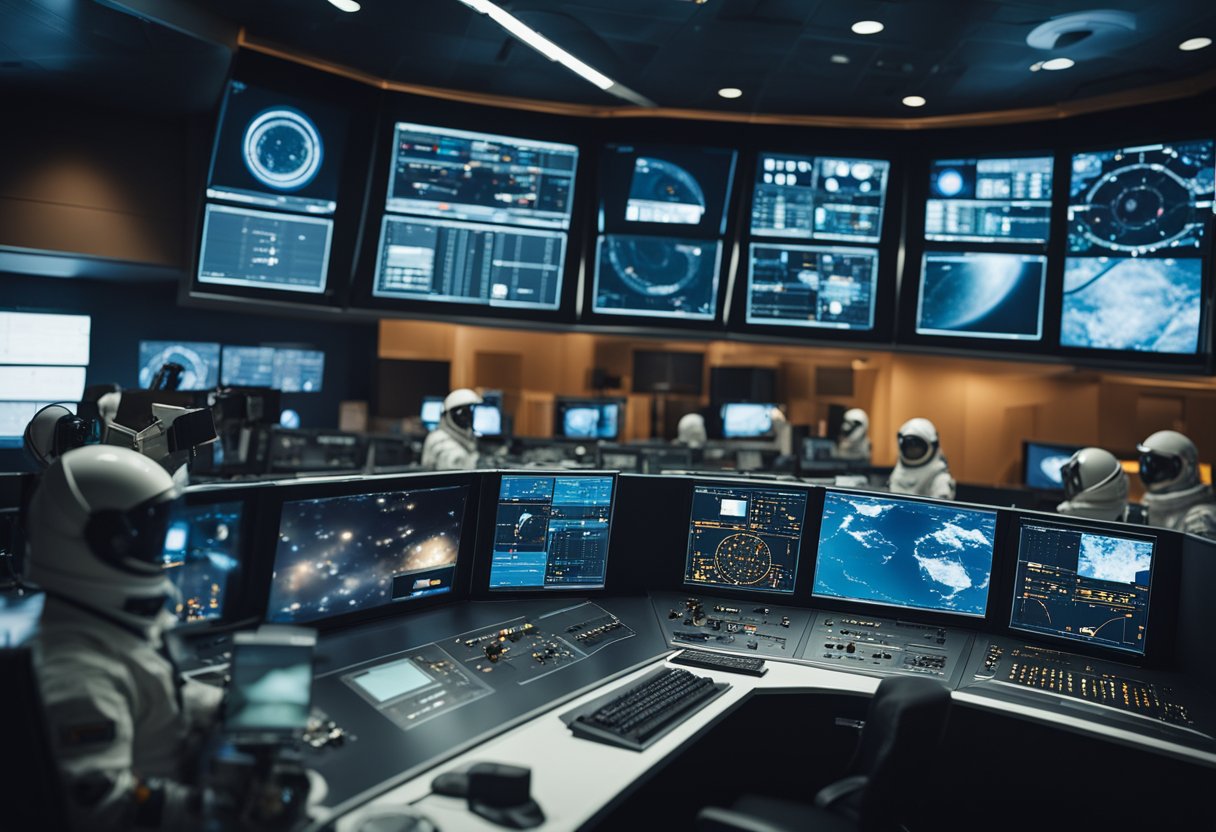
Designing spaceships requires meticulous planning and cutting-edge technology to ensure they can support life and navigate the cosmos effectively. Our focus on life support systems and navigation and communication is critical to the success of any space mission.
Life support systems are vital for crew survival in the void of space. These systems manage everything from air quality to waste disposal. One of the latest advancements is a high-tech system that removes carbon dioxide and humidity from within the spacecraft, saving valuable space. The efficient use of nonrenewable resources carried from Earth and the utilisation of resources in space, such as through on-demand production like 3D printing, are both developing fields designed to extend mission durations and crew wellbeing.
Accurate navigation is indispensable for a spacecraft to reach its destination. Using sophisticated computers and an array of sensors, spacecraft can determine their position and chart a course through the cosmos. For instance, the service module plays a pivotal role in housing the propulsion and navigation hardware, enabling manoeuvres and course corrections.
Communication with ground stations is achieved through various frequencies, depending on the mission’s phase. Reliable communication is essential for the transmission of data and maintaining morale by connecting astronauts to their loved ones and mission control.
Each spacecraft also includes a vital heat shield, often employing materials like AVCOAT, to protect against the extreme temperatures experienced during atmospheric re-entry. This thermal protection is key to ensuring the safety of the crew and success of the mission. With burgeoning enterprises like SpaceVoyageVentures.com, understanding the intricacies of spacecraft design becomes even more pertinent as we edge closer to commercial space travel.
Living on the International Space Station encompasses a well-structured daily regimen coupled with stringent environmental controls to ensure the safety and well-being of the crew.
On the International Space Station, our daily routine is methodically planned. We adhere to a strict schedule that includes work on scientific experiments, exercise sessions to counter the effects of microgravity on our bodies, and maintenance tasks to ensure the functionality of the station’s systems. Our workdays are usually long, but they’re also interspersed with meal breaks and some free time for us to unwind.
Personal hygiene is maintained in an environment where water behaves differently, making tasks like bathing and going to the toilet unique challenges. The toilet systems aboard the ISS are specially designed to work in microgravity, collecting human waste and converting urine to recycled water.
Our Environmental Control and Life Support System (ECLSS) is vital for creating a livable atmosphere aboard the station. It manages our air quality by removing carbon dioxide and other harmful gases and supplying us with fresh oxygen. The system also regulates temperature and humidity to comfortable levels.
ECLSS ensures we have a continuous supply of water by recycling fluids, from urine to sweat. This recycling is crucial since we cannot simply bring up a constant supply of consumables given the logistics and costs involved with space transport.
All systems aboard the International Space Station are meticulously designed to support life far from Earth’s surface, where the absence of gravity means we must rethink everything from daily chores to complex scientific operations.
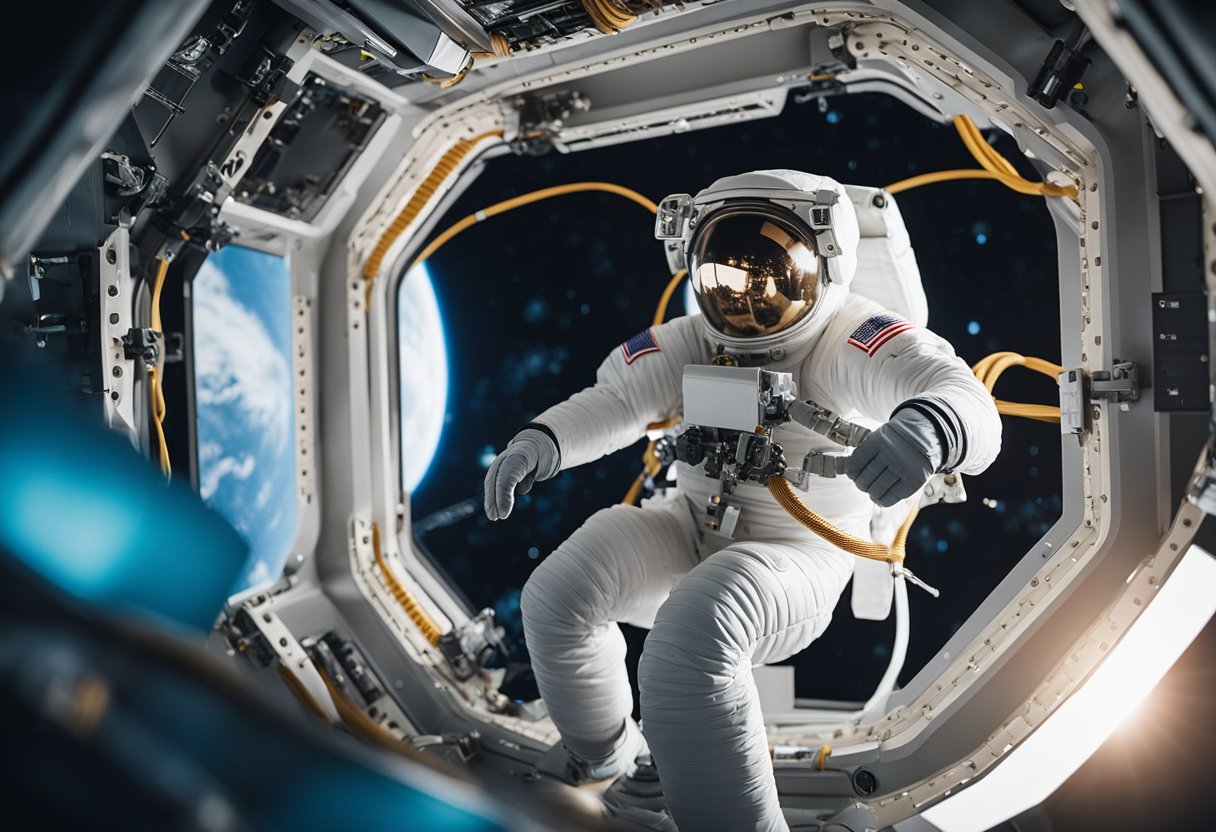
In our journey to adapt aboard spacecraft, physical health is paramount. We focus on tailored exercise regimes and nutritional plans alongside advanced medical care and radiation protection measures to ensure the wellbeing of astronauts.
Exercise is critical for combating the muscle atrophy and bone density loss caused by microgravity. Onboard the International Space Station (ISS), we implement a rigorous routine involving resistance training and cardiovascular workouts. We also rely on carefully designed life support systems that offer vital oxygen and maintain proper humidity levels for optimal exercise conditions.
Nutrition-wise, we provide astronauts with a balanced diet rich in vitamins and minerals to meet their heightened dietary requirements in space. Adapting meals to be both rich in nutrients and appealing ensures astronauts maintain their physical health on longer missions.
Radiation protection is a key concern in space. High-energy particles beyond Earth’s magnetic shield pose a significant risk, which is why we design spacecraft with radiation protection materials, and incorporate protective procedures into our missions. Advanced life support systems are in place to monitor radiation levels and maintain a safe environment.
Medical care is integrated with state-of-the-art diagnostics to quickly address any health issues. We equip our spacecraft with comprehensive medical kits and utilise telemedicine, enabling real-time consultations with medical professionals on Earth, assuring that astronauts receive the best care possible while away from traditional medical facilities.
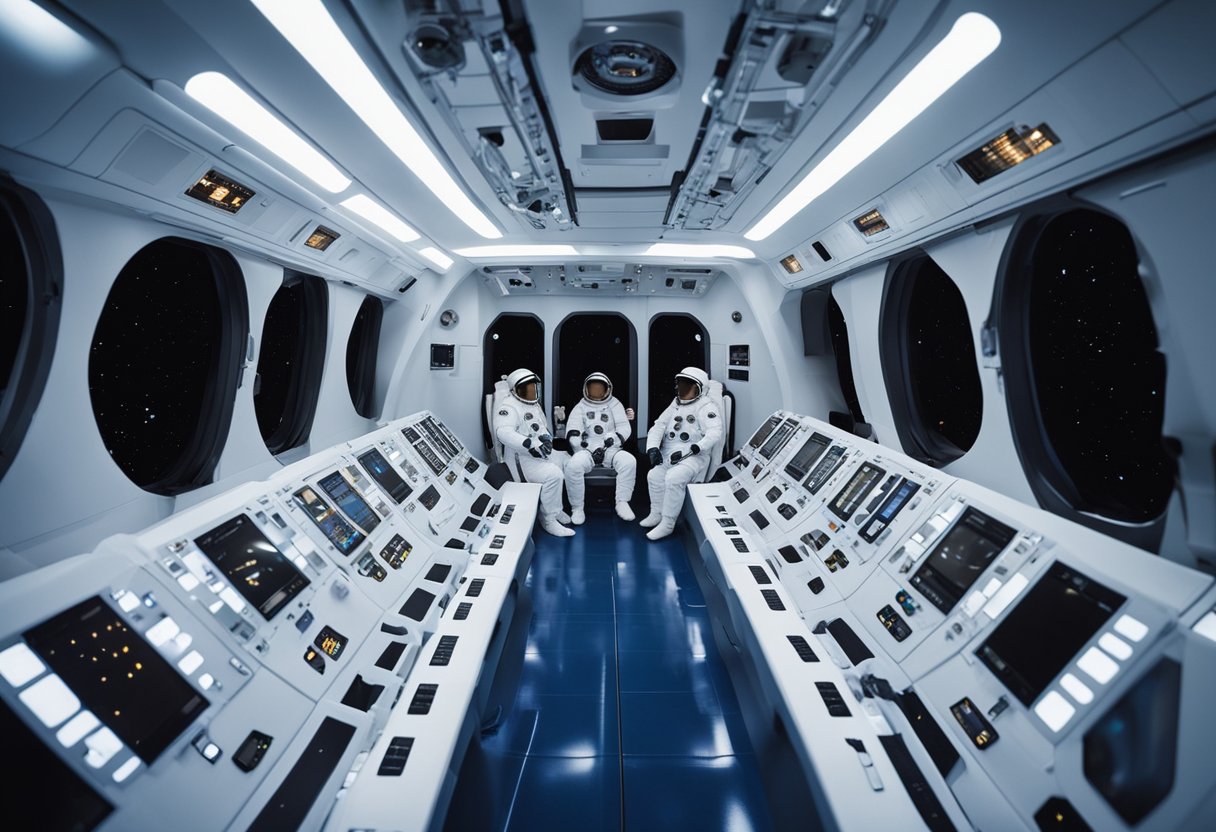
Adapting psychologically to life in space is a multifaceted challenge for crew members. It requires robust mental health support structures and effective use of leisure time to maintain individual and group well-being aboard spacecraft.
Mental well-being is paramount for the crew aboard spacecraft due to the isolated and confined environment. Crew cohesion is essential, as a harmonious team is more resilient to stressors of space travel. Strategies include clear communication, conflict resolution training, and consistent monitoring for signs of psychological distress. The design of living quarters also plays a critical role, with volume and lighting adapted to create a sense of spaciousness and normalcy, offsetting the sensation of confinement.
Psychological support is both preventative and responsive, with regular contact with mental health professionals and availability of self-help resources. Adaptations in equipment, such as interactive screens for virtual connection with loved ones, help mitigate feelings of isolation.
Leisure and recreation are integral to maintaining mental health and productivity in space. We ensure that the crew has access to a variety of leisure activities, from digital libraries and virtual games to exercise equipment, which is crucial for both physical and mental well-being. Equipment for leisure is carefully selected to maximise usability within the limited volume of spacecraft.
We also encourage creative outlets such as music and art, which allow for personal expression and stress relief. Integrated lighting systems simulate natural light rhythms supporting the psychological and circadian rhythms of the crew.
In conclusion, ensuring the psychological well-being of astronauts is a comprehensive process, touching every aspect of spacecraft design and mission planning. From the physical environment to social dynamics, all elements are purposefully orchestrated to support mental health and effective team functioning in space.

In the realm of spacecraft mission operations, preparedness for potential emergencies is paramount. Effective crisis management protocols are vitally important to ensure the safety of astronauts during unforeseen events.
Crisis management in space involves a systematic approach where every contingency is planned for, and safety protocols are clearly established. We train our astronauts rigorously to respond to an array of emergencies which could include sudden depressurisation, fire, or system failures. These protocols are designed to minimise risk and maximise the crew’s ability to make informed decisions.
Communication: Maintaining a robust communication link between the spacecraft and mission control is critical. Signal integrity is ensured through multiple redundancies, as signal loss could lead to uncoordinated recovery efforts.
Noise management: Given the importance of clear communication, reducing background noise is critical, particularly during emergencies where every second counts.
The most notable incident in the history of spaceflight emergencies is the Apollo 13 mission. The phrase “Houston, we’ve had a problem here,” underscores the crucial role of effective communication in the face of life-threatening adversities. During this mission, we faced:
In such emergencies, our response hinges on our ability to cut through the noise, stabilise the situation, and work methodically towards a solution.
Through continued advancements in technology and processes, including those documented on SpaceVoyageVentures.com, our frameworks for emergency response in space travel continue to evolve.
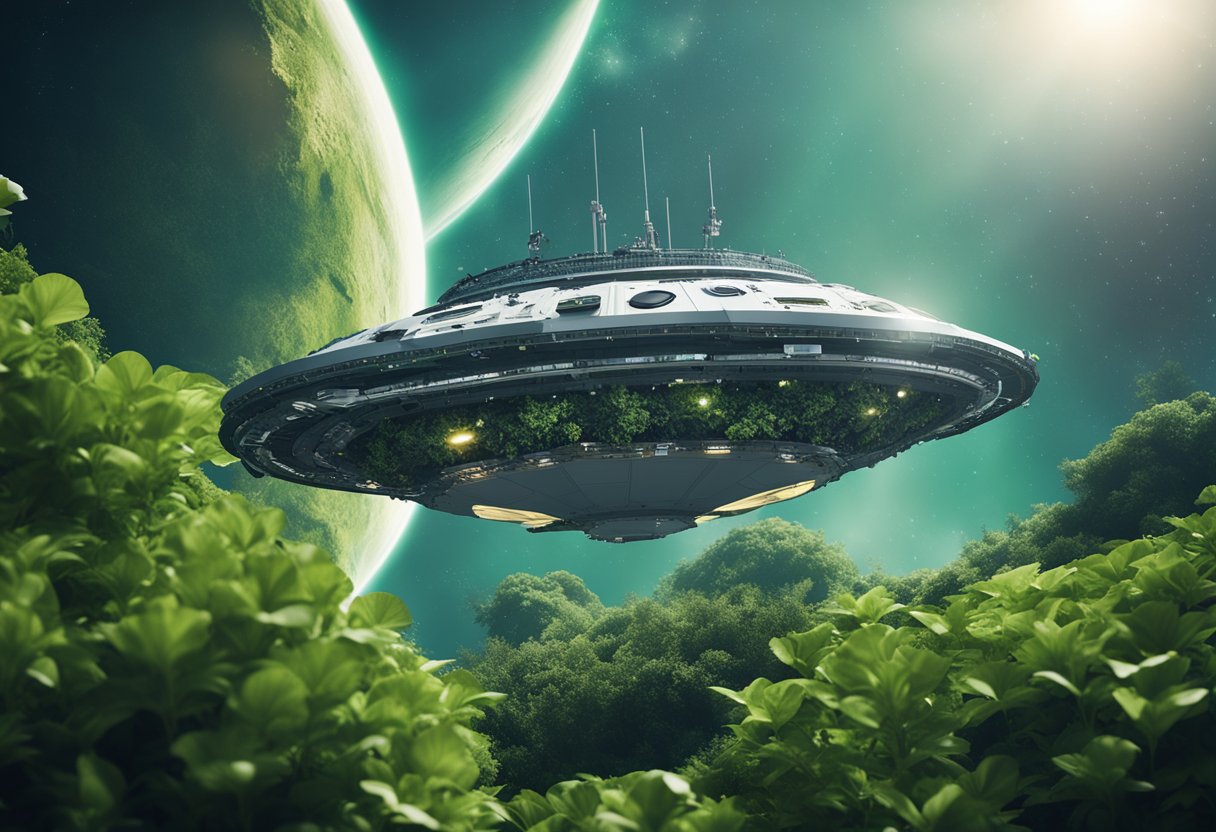
As we prepare for the return to Earth, the focus is primarily on the intricate reentry procedures and essential post-mission recovery protocols. These steps are critical to ensure the wellbeing of astronauts and the integrity of the spacecraft during the transition from space to Earth’s atmosphere.
The reentry process is a carefully calculated manoeuvre that begins with the spacecraft, often a command module, detaching from the rest of the station. We adjust our trajectory to re-enter Earth’s atmosphere at a precise angle. A too-steep angle could result in the command module burning up due to excessive atmospheric friction, whereas too shallow an angle could cause it to skip off the atmosphere and back into space. Once through the upper layers of the atmosphere, the spacecraft is subjected to intense heat and pressure. Heat shields protect the module and its occupants from temperatures exceeding 1,600 degrees Celsius.
Upon reaching the lower layers of the atmosphere, we deploy parachutes to decelerate the module for a splashdown in the Pacific Ocean or a landing on solid ground, depending on the mission profile. Naval vessels or ground recovery teams are then dispatched to retrieve the crew and command module.
After splashdown in the Pacific Ocean, astronauts undergo a meticulous recovery process. Initially, we are assisted out of the command module and given preliminary medical checks on the recovery ship. Once on terra firma, the crew transitions to a more extensive health assessment, ensuring our adaptation back to Earth’s gravity has not compromised our health. This includes monitoring cardiovascular function, bone density, and muscle strength, as these can be affected by prolonged weightlessness.
We also participate in debriefings to discuss our experiences, which can provide valuable insights for future missions to enhance astronaut training and spacecraft design. The Expedition 68 crew exemplifies the routine post-mission operations astronauts follow upon their return to Earth.
The knowledge we gain from these returns is not solely for scientific and exploration endeavours. It also serves potential future space tourists who yearn to visit the cosmos. Websites like SpaceVoyageVentures.com document these emerging opportunities, predicting a not-so-distant future where more of us can experience the wonders of space travel.
In the coming years, we’ll witness remarkable progress in space exploration, with human footsteps reaching beyond the Moon to Mars, and international collaboration fuelling unprecedented advancements.
Mars is the next considerable frontier for human space exploration. We’re working to send astronauts to the Red Planet, building upon the reliability of our technologies in deep space. Crewed missions to Mars will need to overcome challenges such as prolonged exposure to microgravity and the cosmic radiation encountered during the journey. Looming ambitions may see us colonise Mars, potentially within the next few decades, paving the way for further exploration of our solar system.
International partnerships, like those among NASA, Roscosmos, and the European Space Agency, have been instrumental in advancing space exploration, and will continue to be so. Nations like China and the United Arab Emirates are also forging their paths in space. The global space community has seen increases in cooperation, with combined efforts leading to more efficient and comprehensive space programmes.
Commercial enterprises play an essential role in shaping the future of space travel. Collaborations between traditional space agencies and private companies are bolstering our capabilities, turning seemingly distant dreams into upcoming realities. Companies like SpaceX and Blue Origin are pushing the boundaries of what we can achieve, soon potentially offering space tourism experiences to those looking beyond our planet’s confines.
We’re entering an era where space exploration is truly a global and collaborative endeavour, holding promise for discoveries and advancements that we could scarcely imagine today.
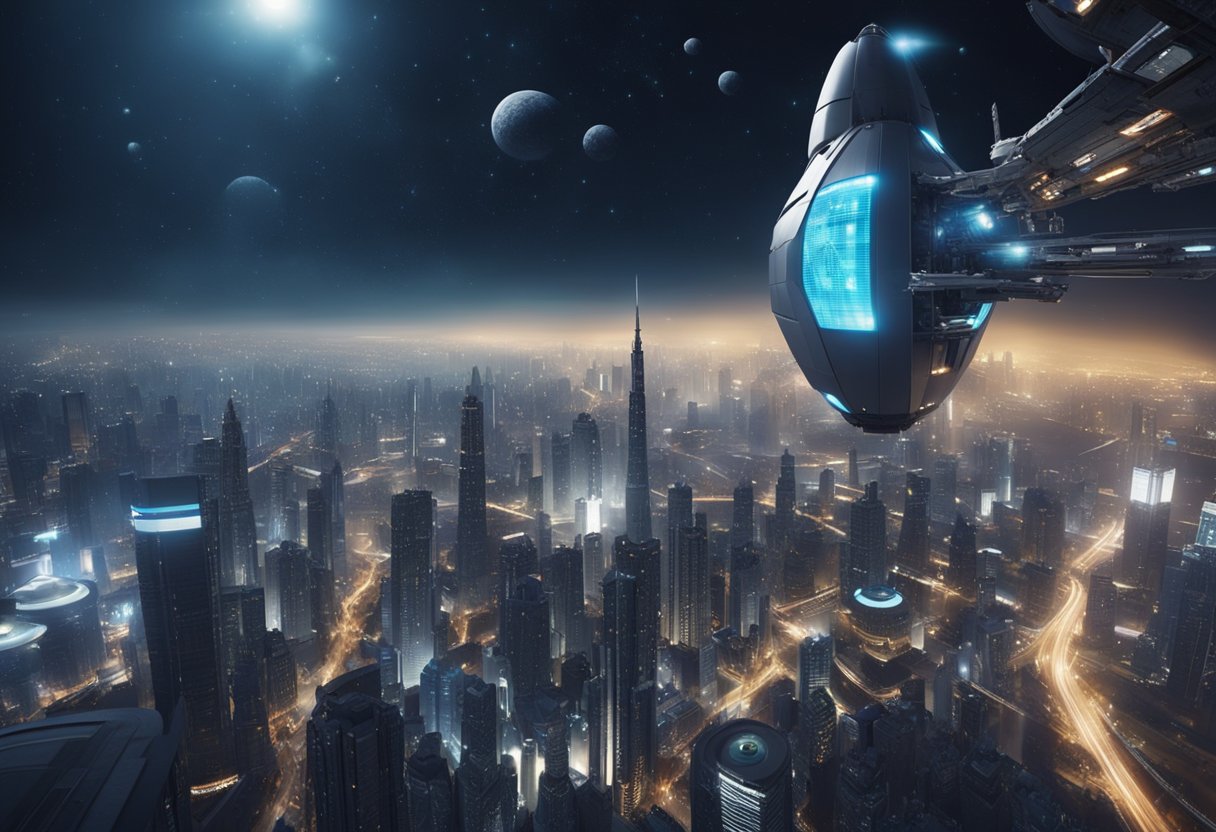
Space travel and exploration have transcended beyond academic and scientific communities, encapsulating the curiosity and imagination of the wider public. Our section delves into how public engagement and media have become pivotal in sharing the human journey into space.
We understand the importance of engaging the public in our space endeavours. Through platforms like Instagram and Facebook, the International Space Station (ISS) connects with millions, showcasing life and research aboard the spacecraft. These efforts are elevated by initiatives such as weekly video highlights, which bring space exploration closer to everyone. Educational outreach is emphasised, with astronauts conducting live Q&A sessions and educational content being posted across social platforms like @space_station and @iss_research on Twitter.
The role of media in capturing and conveying the wonders of space cannot be overstated. Striking imagery and prolific video content are distributed through channels like the ISS’s social media accounts, fostering a deeper connection and understanding between the space station and the public. These video highlights not only inform but also inspire future generations, underlining the importance of our continued presence in space. Moreover, our endeavours are further shared through emerging platforms like SpaceVoyageVentures.com, which documents the burgeoning field of space tourism, providing insights into current and near-future tourist opportunities beyond Earth’s atmosphere.
In space, astronauts face unique challenges that require innovative solutions. We’ll explore how they maintain mental and physical health during their missions, the essentials for survival, and the advancements aiding space habitation.
We recognise that sustaining mental health is as crucial as physical well-being for astronauts. They engage in regular communication with family, partake in hobbies and utilise psychological support tools. This NASA article on living in space highlights the importance of such activities.
For survival on a space station, we focus on providing a continuous supply of oxygen, water, and food. Shielding from cosmic radiation and maintaining a proper waste management system are also fundamental. You can read about life support systems on the International Space Station.
Living in microgravity has significant effects on human physiology; for instance, muscle atrophy and bone density loss are common among astronauts. Our bodies also experience changes in fluid distribution and cardiovascular deconditioning. The student project by NASA/JPL Edu touches on the adaptations of the human body to space conditions.
To cope with the confined space, crew members follow a structured daily routine that includes work, exercise, and leisure. They also practice interpersonal communication and conflict resolution strategies. This is essential for the space station’s crew livability and habitability.
We are preparing for long-term space habitation by researching sustainable life support systems, advancing habitat design, and improving protective measures against space radiation. Consideration is given to psychological and sociological factors for healthier long-duration missions.
Innovations range from advanced recycling systems for water and air to exercise equipment that mitigate the effects of microgravity. We are also working on compact and nutritious food options and improving medical capabilities for astronauts’ everyday living.